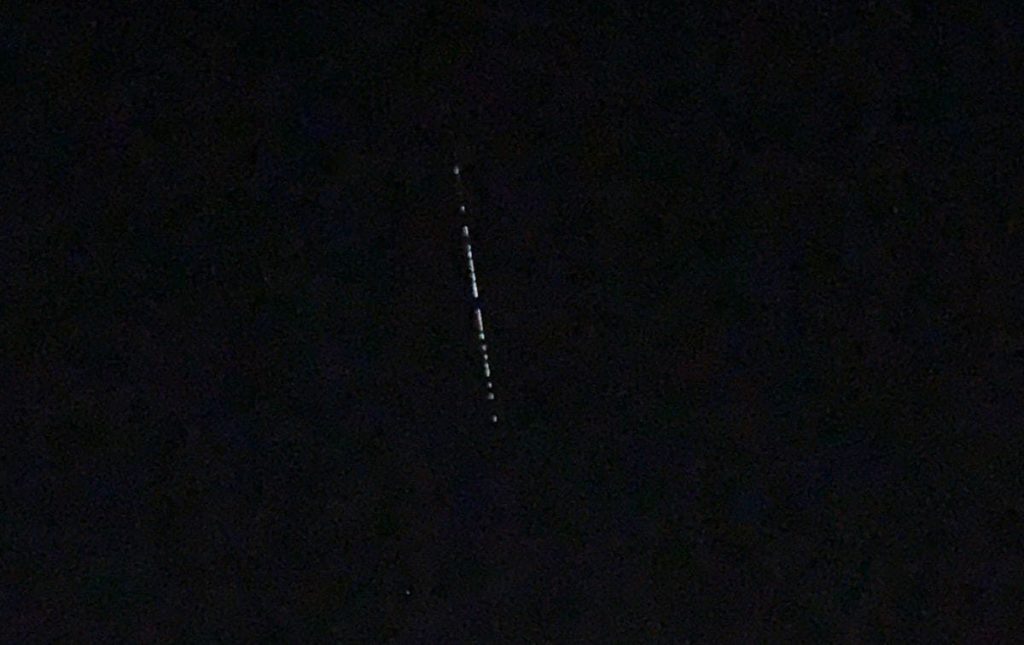Several Capetonians across the city and further afield spotted a string of mysterious lights streaking across the night sky before disappearing into the darkness on the night of Friday, February 5.
Those who were lucky enough to capture the event in photographs or video turned to social media to seek answers.
Unsurprisingly, several users commented that the lights were an indication of an alien presence. The real explanation is not as farfetched, but it is just as exciting.
On Thursday, February 4, Elon Musk’s SpaceX launched 60 Starlink satellites from its Space Launch Complex 40 in Cape Canaveral, Florida.
The lights seen over Cape Town on Friday night are related to this launch, according to avid skywatchers.
Resident Willie Koorts managed to capture the Starlink satellites on video on consecutive nights in Wellington.
“Tonight’s [Friday] flypast of the most recent L18 Starlink launch over South Africa, showed that the 60 satellites spread out nicely already, now 1.5 days after deployment,” said Koorts after observing the satellites.
In the video Koorts posted before, which showed the satellites a day-and-a-half (12.5-hours) after launch, they were much closer together and harder to spot individually.
“We have passes predicted for the next few nights, so I hope it stays clear so we can watch them spread out,” said Koorts.
@elonmusk i think i just saw your trail of Starlink ? flying over cape town. Im freaking out!!! My wife thought it was aliens at first. I watched your stream yesterday!!!! I can die now pic.twitter.com/FjypcK9cqc
— Stillie (@TheRealStillie) February 5, 2021
Through his Starlink project, Musk intends to launch thousands of satellites into orbit, which will be used to provide universal internet coverage on earth from space.
The first launch took place in March 2019 and so far the company has put 360 satellites into orbit. The satellites are launched in batches of 60 and SpaceX hopes to launch at least two batches per month but it hasn’t gotten up to speed just yet. Its ultimate goal is to have 12 000 Starlink satellites in orbit, according to Forbes.
SpaceX’s reusable Falcon 9 rockets are used to place the satellites 290 kilometres above the earth’s surface.
Then, the satellites use their onboard ion engines to propel themselves to an operational orbit of between 340 and 550 kilometres, which can take several months to achieve.
The satellites may be visible to the human eye during the months it takes them to achieve operational orbit because of their reflective surfaces, as they reflect the Sun’s light back onto the ground just after dusk or before dawn when the sun dips below the horizon.
Picture: Facebook/Jeremy Lock






